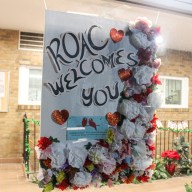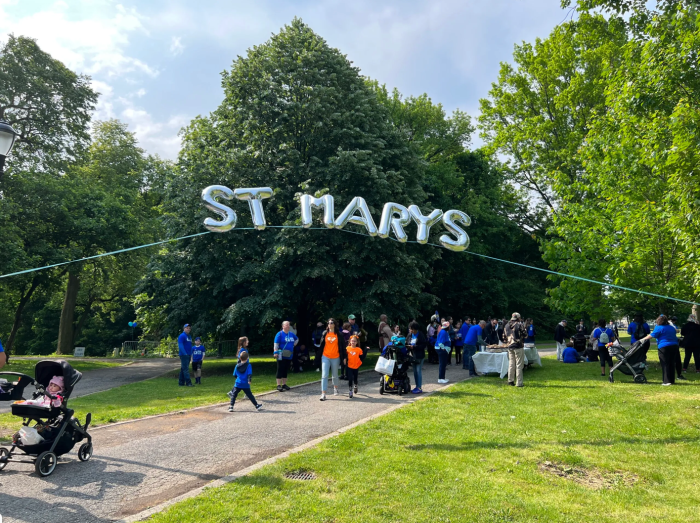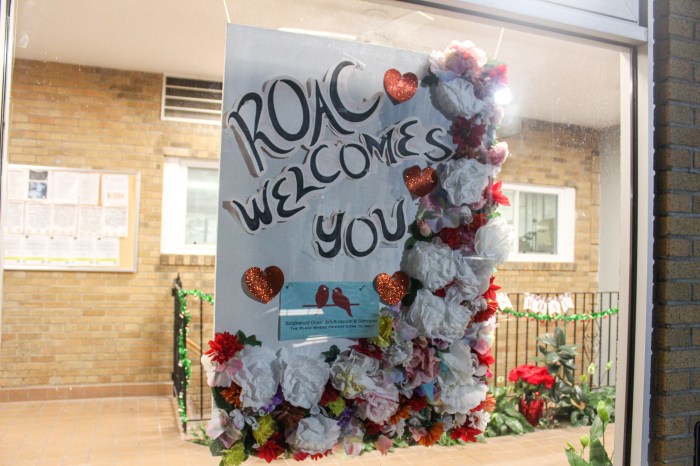By Kenneth Kowald
This was brought home to me again this past fall when I joined hundreds of others to attend the ground breaking ceremony for the garden's Green Design Capital Project. It was truly an event that celebrated our diversity.Those who attended were given dried white sage leaves, which we placed in a receptacle for burning. Native Americans have burned the dried leaves and stems of the sage to cleanse and purify a place, a person or an object, to help drive away negative energies and to aid in the creation of sacred space. One of the highlights of the ceremony was a performance by the RedHawk Native American Arts Council.The award-winning design of the new Queens Botanical Garden Visitor/Administration building and landscapes incorporates innovative storm water management, energy conservation and environmental stewardship. It will use the sun's energy for photovoltaic panels, collect and reuse rainwater, harness geothermal energy and have a green, planted roof which will manage all storm water on-site.It will be visually integrated with the garden's landscape. Woodland, prairie and aquatic plants native to the New York region will be part of the surrounding landscape. Even the parking lot, using permeable pavers, will allow water to trickle back to the aquifer.This is “green design” at its best.Construction of the new buildings and landscapes is scheduled to be completed in the fall of 2006, but during construction the public is invited to learn about the green design features of the project. As it is being built, educational programs are being offered.The visitor/administration building will have 15,831 square feet and the horticulture/maintenance building will have 6,229 square feet. The cost of the project is $12 million.The Queens Botanical Garden started as “Gardens on Parade” on a five-acre site in the 1939-1940 World's Fair. Some 40 years ago, when the 1964-1965 World's Fair was coming into existence, the garden was moved to its present 39-acre site and it has been developing ever since, especially, as noted, in the last decade.Today, more than 300,000 people visit the Queens Botanical Garden every year, speaking any of the 130 of the languages or dialects heard in the borough. About 15,000 school children visit the garden each year. The learning experience is invaluable.I have been fortunate to be at several Arbor Day events in the garden and at the two Green Horizons career conferences for middle school children held there, sponsored by New York ReLeaf and the Environmental Education Advisory Council. It is wonderful to see the effect the garden has on the hundreds and thousands of children who attend these events.A few hours at this place of beauty at any time of the year is a joy. An especially good time to visit might be Sunday, May 1, which is the garden's annual Gardening Day. There will be workshops, talks, entertainment and demonstrations which should be of interest to everyone. Save the date.nNow, as the new project is fully underway, you have a chance to see what excellent planning and hard work can do. By all means, visit the Queens Botanical Garden as often as you can. You will see, every time, how your money is being put to very good use. Update: Dorothy Lewandowski, borough commissioner of Parks and Recreation, was kind enough to read the recent column about re-visiting green spaces in Queens and action is being taken on two items I mentioned. The historical sign in Maple Grove Park next to the civic complex in Kew Gardens will be revised to include the correct Richmond Hill address of the family of Jacob Riis. Prunings have been done at the Ilse Metzger Sitting Area in Forest Hills and new park signs are planned. Thank you, commissioner.

































